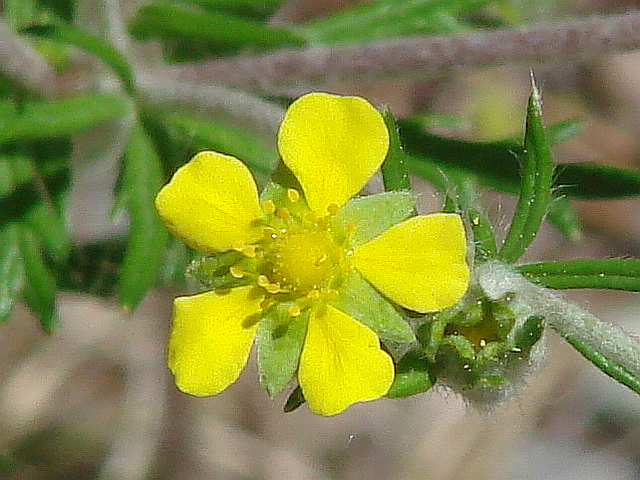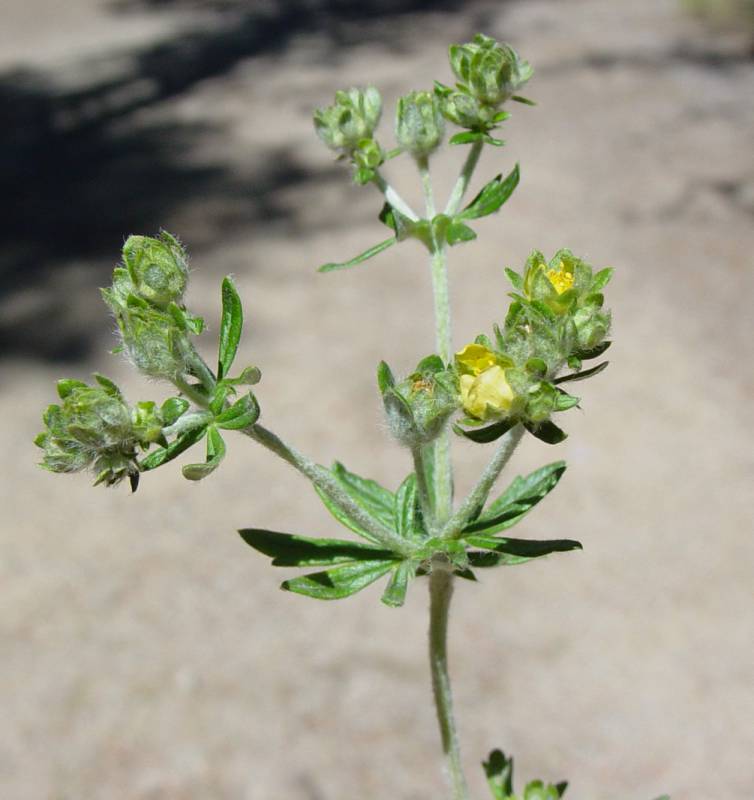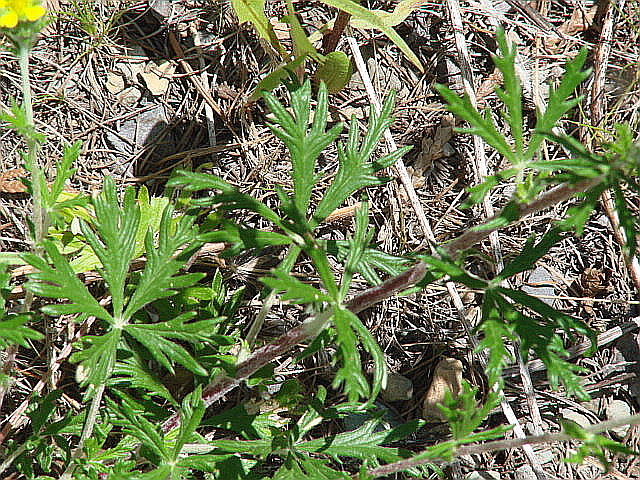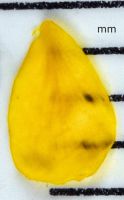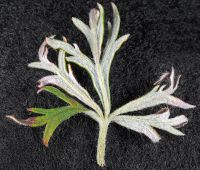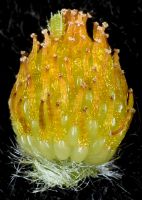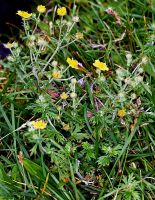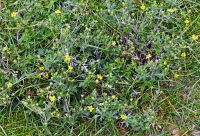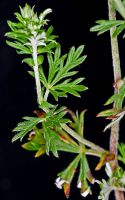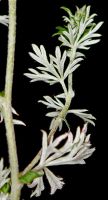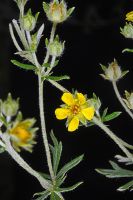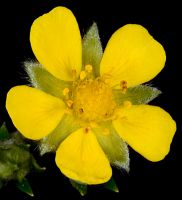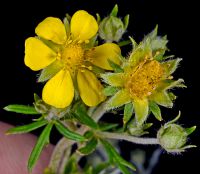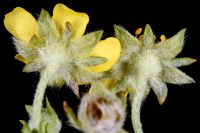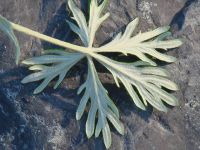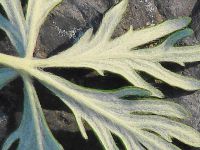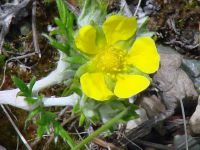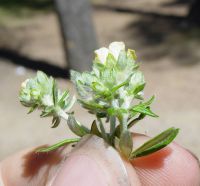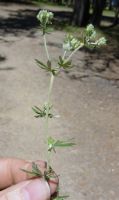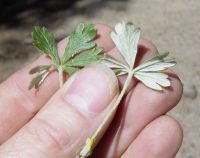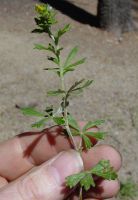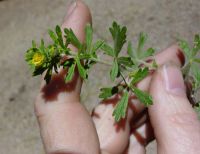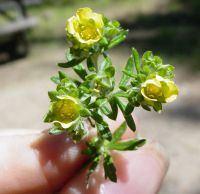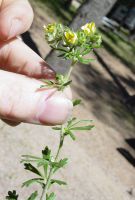Distribution: Occurring east of the Cascades crest in Washington; British Columbia to Oregon, east across the northern U.S. and Canada to the Atlantic Coast.
Habitat: Sandy or gravely soil, typically where disturbed.
Flowers: June-July
Origin: Introduced from Eurasia
Growth Duration: Perennial
Conservation Status: Not of concern
Pollination: Bumblebees, bees, flies, butterflies, beetles, moths, wasps
Herbaceous perennial from a woody base, the numerous stems 1.5-3 dm. tall, covered with a gray pubescence.
Leaves mainly cauline, 5-10 per stem, palmately divided, the leaflets 5, 1-2 cm. long, oblanceolate, with coarse serrate teeth over half way to the mid-vein; stipules lanceolate, entire, 4-8 mm. long.
Inflorescence open, branched, many-flowered, leafy-bracteate; calyx 4-6 mm. broad, silky, the 5 lobes ovate-lanceolate, 2-3 mm. long, alternating with linear, shorter bracteoles; petals 5, yellow, obovate with a wedge-shaped base, equaling the sepals; stamens 20; pistils numerous, the styles thickened and glandular at the base, tapered upward, attached to the end of the achene.
Achene 0.6-0.8 mm. long, the same length as the style.
Publication: Sp. Pl. 1: 497. 1753.
Fragaria argentea Crantz
PNW Herbaria: Specimen records of Potentilla argentea in the Consortium of Pacific Northwest Herbaria database
WA Flora Checklist: Potentilla argentea checklist entry
OregonFlora: Potentilla argentea information
E-Flora BC: Potentilla argentea atlas page
CalPhotos: Potentilla argentea photos

